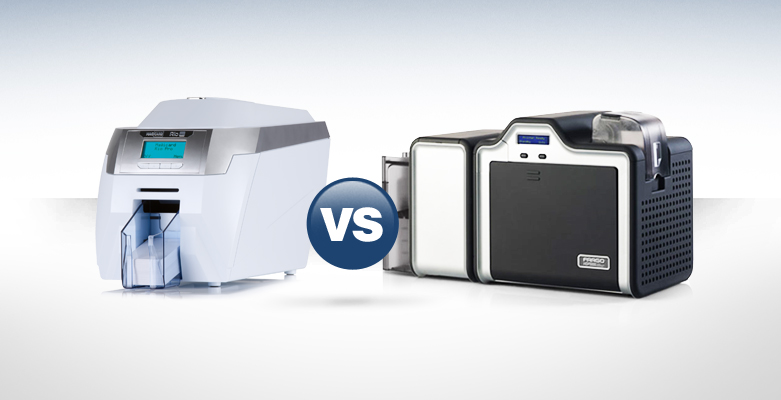One of the first choices you need to make when selecting an ID card printer is the printing technology – do you want a dye sublimation or a reverse transfer printer? But if you don’t know what the technology is or how it works, you may struggle to make the choice. Our ID experts are here to help explain the technology behind ID card printers!
How does dye sublimation printing work?
Dye sublimation printing is a two step process:
- First, the printhead heats the ribbon to transfer the design to the card
- Second, your card design is set and the finished card is ejected
Because this is a shorter process, dye sublimation printers have faster print speeds. If you need to quickly print large batches of cards, consider a dye sublimation printer.
How does reverse transfer printing work?
Reverse transfer printing has one additional step:
- First, the printhead heats the ribbon and transfers the design to the clear film
- Second, the clear film is heated and fused with the card
- Finally, the card design is set and the finished card is ejected
While the extra step adds a few seconds to the print time, these printers create card designs that are clearer and more durable.
How do I know which one is best?
Knowing which type of printer to select will depend on your card printing goals. While you are researching ID card printers, ask yourself these questions:
- Is budget important? Dye sublimation printers and supplies are more economical
- Is speed important for batch printing large jobs? Dye sublimation printers are faster
- Am I using technology or smart cards? Reverse transfer printers are recommended for printing on technology cards
- Will I print a detailed design? Reverse transfer printers have high definition, true over-the-edge printing, and increase card durability so the design is less likely to scratch or wear off
Read the full article on dye sublimation and reverse transfer printing.





